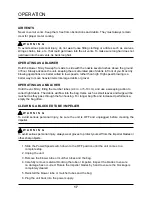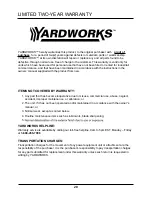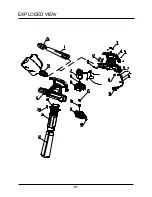
9
ELECTRICAL
W A R N I N G
KEEP THE EXTEnSIOn CORD CLEAR Of WORKInG AREA. POSITIOn THE CORD SO THAT
IT WILL nOT GET CAUGHT On LUMBER, TOOLS OR OTHER OBSTRUCTIOnS WHILE YOU
ARE WORKInG WITH A BLOWER/VAC. fAILURE TO DO SO CAn RESULT In SERIOUS
PERSOnAL InJURY.
W A R N I N G
THIS BLOWER/VAC IS fOR OUTDOOR USE OnLY. DO nOT EXPOSE TO RAIn OR USE In
DAMP LOCATIOnS.
GUIDELINES FOR USING EXTENSION CORDS
USE THE PROPER EXTEnSIOn CORD. Make sure your extension cord is in good condition.
When using an extension cord, be sure to use one of heavy enough gauge to carry the current
your product will draw. An undersized cord will cause overheating. The table below shows the
correct size to use depending on cord length and nameplate ampere rating. If in doubt, use the
next heavier gauge.The smaller the gauge number, the heavier the cord.
Make sure your extension cord is properly wired and in good electrical condition.
Always replace a damaged extension cord or have it repaired by a qualified technician
before use. Keep extension cords away from sharp objects, excessive heat and
damp or wet areas.
Use a separate electrical circuit for tools. This circuit should not be less than #12 wire
and should be protected with a 15 A time delayed fuse. Before connecting the motor
to the power line, make sure the switch is in the Off position and the electric current
is rated the same as the current stamped on the motor nameplate. Running at a
lower voltage will damage the motor.
MINIMUM GAUGE FOR EXTENSION CORDS (AWG)
(WHEn USInG 120V OnLY)
Amp Rating
Total Length of Cord in Feet (meters)
More Than
Not More Than
25' (7.6 m)
50' (15 m)
100' (30.4 m)
150' (45.7 m)
0
6
18
16
16
14
6
10
18
16
14
12
10 12 16 16 14 12
12 16 14 12 not
Recommended
**Ampere rating (on tool faceplate)
Содержание 267-2929
Страница 21: ...21 EXPLODED VIEW...








































